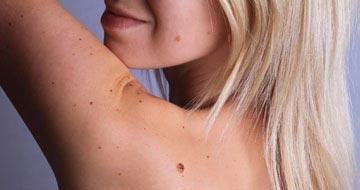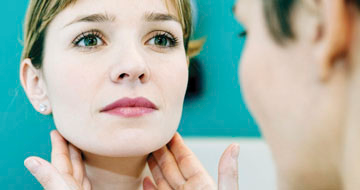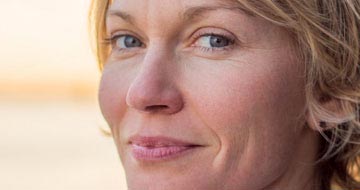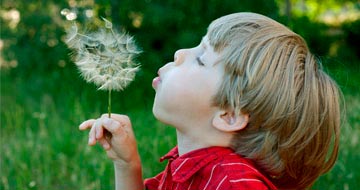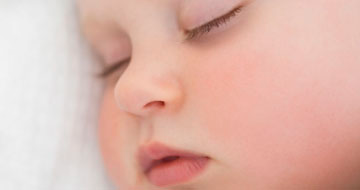Common skin conditions in children and babies
When your child shows signs of a skin condition, it can be distressing for both you and them alike. If they have a rash and a temperature, then they definitely need to see a doctor, but what about skin problems that cause visible skin changes but produce few, if any obvious symptoms? These are surprisingly common. Our team of specialists including dermatologists and paediatricians are skilled in diagnosing when treatment is necessary and when there is no need to be alarmed.
Common skin conditions in babies
When a baby is born, their immune system learns to adapt outside of the womb, which can lead to skin changes such as redness, dryness or flaking during the first few weeks of life.
Many of these skin changes are nothing to worry about and slowly disappear on their own. But, if a spot looks red and angry, or your baby seems unwell or develops a temperature, our team of specialists can check your baby’s skin, recommend any necessary treatment or simply put your mind at rest. While all our GPs and paediatricians are experienced in treating children’s skin problems, Dr Veronique Bataille is a paediatric dermatologist who specialises in treating skin conditions in children and babies.
Cradle Cap Mottling and redness of the scalp is common in newborn infants as is a build-up of dry skin flakes while their skin and hair follicles adapt. In some cases, a thick circle of yellow, waxy crusts builds up, which is known as cradle cap. The exact cause of cradle cap is unknown, but it is thought to result from an over-reaction to the presence of a normal skin yeast. Known as seborrhoeic dermatitis, it can also affect the face, neck, behind the ears and the nappy area which starts to look red and inflamed.
If you are worried about the appearance of cradle cap, or if a patch seems infected, our specialists can advise on any necessary treatment.
Nappy Rash Severe nappy rash is now less common thanks to modern nappy technology that locks moisture away from your baby’s delicate skin. If your baby does develop a rash in the nappy area, our paediatricians can advise on the best way to treat it. Sometimes using a barrier cream solves the problem, but in some cases an anti-fungal cream or other treatment is needed.
Infantile Acne Some babies and infants develop infantile acne during the first few years of life as a result of changing hormone levels. If they develop typical whiteheads, blackheads and pimples, our paediatricians can advise on how best to cleanse your child’s skin, and whether or not a specific acne treatment is needed until symptoms settle down.
Our paediatric dermatologist can also advise on the best way to treat teenage acne in older children.
Common skin conditions in children
A child's skin condition or problem may present itself with any number of symptoms. Although many are minor, and fully treatable, it is important to understand the cause of a change in your child's skin. Understanding if it is a situational or genetic cause, and whether it is a temporary or permanent condition, will help establish the severity of the condition, and rule out any serious issues.
Impetigo This skin condition is a highly contagious bacterial infection which produces a patch of weeping blisters that develop a characteristic, golden-yellow crust. Impetigo is often seen around the mouth and nose, but can occur anywhere. If you think your child has impetigo, it’s important to see a GP or paediatric doctor as an antibiotic cream or ointment is needed to prevent the infection from spreading. If your child seems unwell or has a temperature, then oral antibiotics may be prescribed instead.
Eczema Eczema is a common and distressing problem in infants and children of all ages. Mild eczema symptoms may include dry, scaly skin, redness or itching, while in more severe cases blisters or even weeping sores may develop. These skin changes most commonly appear on the face, neck, hands, inside the elbows or behind the knees, but can occur anywhere on the body.
Eczema is particularly distressing when itching and scratching interfere with sleep, or when clothes rub to cause discomfort. Worsening eczema is sometimes associated with colonisation of skin by a bacterium, Staphylococcus aureus, even in areas that do not look obviously infected.
Our paediatricians or our paediatric dermatologist, Dr Veronique Bataille, can advise on the best treatment to help soothe your child’s skin.
Sometimes, infantile eczema is due to an allergy, such as to cows' milk, and our paediatric allergist, Dr Sophie Flammarion is also on hand to help diagnose any underlying allergies – once these are identified and avoided, eczema can show a dramatic improvement.
Psoriasis Psoriasis sometimes develops in children, often after a throat infection and can even lead to joint pain and swelling. Psoriasis forms a rash of small, red, scaly patches that can itch or feel uncomfortable. It’s important for a child with psoriasis to see a paediatric dermatologist, who can prompt diagnosis and treatment and monitor your child’s general health as they develop. Some children develop as a result of having psoriasis, for example, and this needs.
Diagnosing skin problems in children at the Kensington Kids Clinic London
So many different problems can affect your child’s skin that it’s impossible to cover them all here. Our paediatricians are experienced in the diagnosis and management of all children’s skin conditions and after a full assessment of your baby or child’s skin, specialist care can be provided. To find out more, please phone 020 7244 4200 for a confidential chat.


